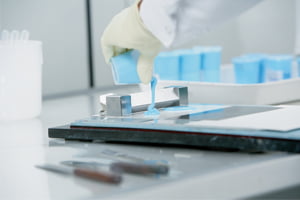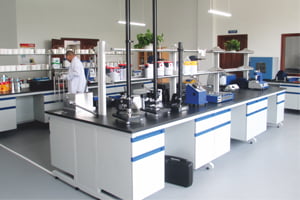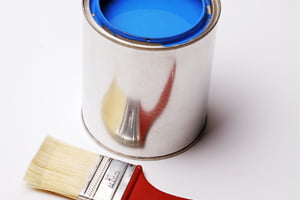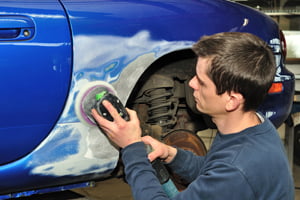
A guide to selecting quality control equipment for a simple laboratory
All paint companies typically require the following equipment and devices to equip a basic laboratory with a minimum budget:
- Types of paint film applicators
- Viscosity cup and chronometer
- Coating test plates
- Impact resistance test
- Bending test (mandrel)
- Adhesion test (cross cutter test)
- Types of wet and dry paint film thickness gauges

Guide to selecting paint quality control equipment for a complete paint laboratory
After equipping a basic laboratory, other equipment needed includes:
- Types of dry and wet abrasion tests (paint wash test)
- Laboratory oven
- Calorimeter (spectrophotometer)
- Cupping test
- Paint drying time stability
- Grindometer
- Single or multi-angle gloss meter
- Environmental test cabinets (resistance to UV and xenon light)
- Cabin for comparing color differences in different light sources
- Types of laboratory mixers and agitators
- Conductivity meter, colorimeter and pH meter
- Thermometer
- Digital viscometer
- Pycnometer cup
- Cryptometer
- Types of magnifying glasses and microscopes
- Types of laboratory hardness testers such as pendulum, pencil and Buchholz types
- Precision laboratory balance
- Scratch resistance test (Scratch tester)
Guide to selecting quality control equipment for construction, industrial and traffic paints
Construction paints are those paints that are mainly used in construction projects and, apart from the issue of surface protection, are also directly related to aesthetics. Construction paints are usually presented in the form of oil-based alkyd, acrylic, and water-based plastic paints. Industrial paints are applied to various metal and cement surfaces to protect them against corrosion and physical-chemical changes. In addition to protection, industrial paints have properties such as gloss, color shade, resistance to friction, scratches, and abrasion, as well as chemical and weather resistance. These products are among the most widely used types of paints in our lives.

List of common tests:
Due to the similarity in application and use of the equipment, it will be sufficient to mention only the names and standards used in this regard.
Granulation determination test: Grindometer device in accordance with ISO 1524 and ASTM D 333 standards
Determining the specific gravity (density) of paint: Pycnometer cups (ISO 2811) are usually used to measure density.
Paint film application tools: Various applicators with the ability to apply various types of paint film in various thicknesses.
Viscosity measurement: including Ford viscosity cups (ASTM D 1200), (DIN 53211) and Krebs viscometers in accordance with ASTM D 562 standard.
Measuring paint gloss: Considering different surfaces with different gloss levels (matte, semi-gloss and glossy), gloss measuring devices with the ability to measure gloss at three angles (20, 60 and 85 degrees) in accordance with ASTM D 523, ISO 2813 standards are recommended.
Color hue measurement: using spectrophotometers and color comparison booths under different lighting conditions
Measuring the coverage (contrast) level: Checking the coverage of dry paint using a reflectometer and measuring with a cryptometer to determine the coverage of wet paint.
Dry paint layer thickness: using thickness gauges in separate probe and self-contained probe types
Adhesion test: or cross-cut test to determine the adhesion of the dry paint layer to the underlying surface.
Measuring the hardness and resistance of paint to scratching: Pendulum hardness testers, pencil hardness testers, spring hardness testers, and Scratch Tester are mainly used to perform these tests.
Determining flexibility and impact resistance: Using cylindrical or conical mandrel devices to determine flexibility and impact testing to determine paint resistance to direct impact.
Environmental resistance tests: mainly UV resistance test cabins and Xenon Test cabins
Chemical and corrosive resistance tests: Typically salt spray tests, water immersion resistance, moisture resistance (blistering), and chemical impact resistance. Cupping test: Using a cupping device.
A guide to selecting quality control equipment for automotive paint and automotive repairs
Automotive paints come in two main types: the colors used in automotive companies and repair paints. They mainly refer to types of coatings that are used to protect and beautify the body of the car, as well as the metal parts inside and outside the car. In terms of appearance, they are produced and supplied in two forms: solid and metallic.

List of common tests:
Granulation test: Includes types of grindometers in the ranges of 0-250/0-100/0-50/0-25/0-15 microns to check the granulation of manufactured products in accordance with ISO 1524 and ASTM D 333 standards. Measurement of specific gravity (density) of paint: Pycnometer cups (ISO 2811) are commonly used to measure density.
Paint film application tools: Applicators have always been one of the most practical equipment used in all laboratories and with them, different thicknesses of the desired coatings are applied wet on standard test plates to perform various tests. Sagging type applicators are used to check the amount of paint sag in different thicknesses and Leveling applicators are used to check the level of paint alignment in different ranges.
Viscosity measurement: In automotive paints, according to various standards, different equipment such as Ford viscosity cups (Ford ASTM D 1200), (DIN 53211), Afnor cups, Krebs viscometers according to ASTM D 562, and for thick samples and non-Newtonian fluids, spindle viscometers with variable spindle speed (ASTM D 2196, ISO 2555) are used to calculate viscosity.
